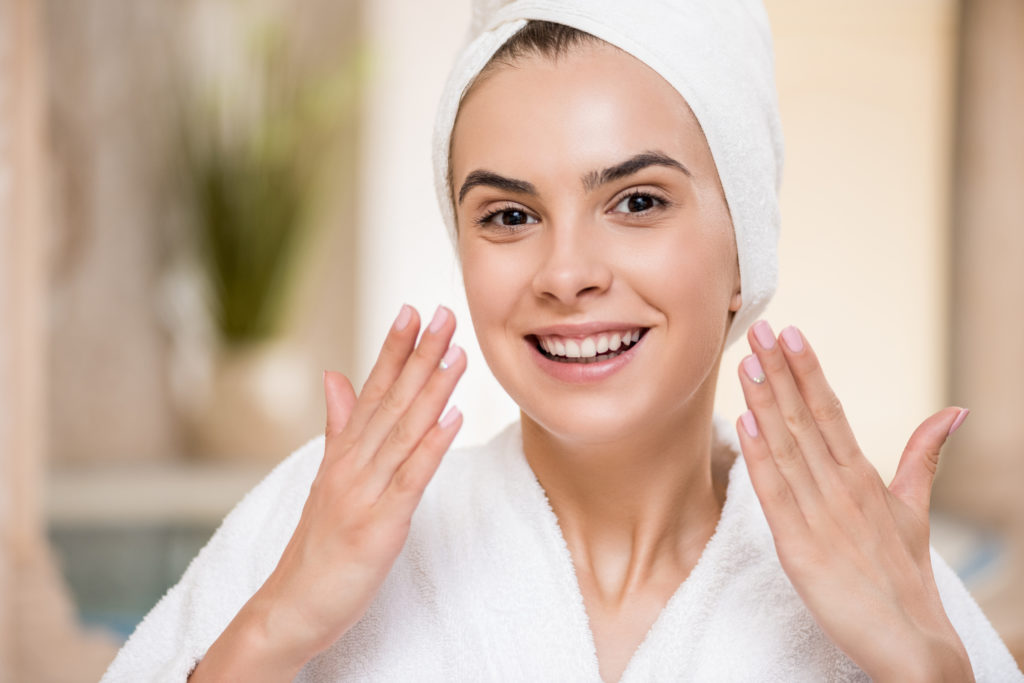With all the skin care products available, choosing the right one can be overwhelming. Each year, thousands of new products are released and deciding which one is best for your skin, while trying not to spend too much money is stressful.
And once you buy the products, how do you decide what order to apply them on your face? You can buy the best, most expensive skincare products, but if you’re applying them in the wrong order, you’re wasting your time and money. If you don’t apply the products correctly, they many not seep into your skin, especially if you put fluid or water-based products on top of thick, creamy, or oily ones. When the products don’t seep into your skin properly, you’re not getting the full benefits of them and you might actually be harming your skin. You can dehydrate your skin or get rid of the SPF protection found in sunscreens, leaving you vulnerable to skin cancer and age spots! If you’re longing for picture-perfect skin, this is the skincare routine you should be following in the morning.

Step 1: Cleanser
Before even thinking about applying your makeup, you need to wash your face to remove any makeup from the night before, dirt, or oil. Your beauty products can’t absorb properly unless you’re working with clean skin. Whatever you do, don’t rely on makeup wipes as they irritate your skin and they don’t properly cleanse it, which can lead to breakouts. Instead, use a cleansing oil, which removes makeup without stripping your skin. Then, finish it off with a gentle, creamy cleanser.
Step 2: Toner
You might recall toners irritating your skin because they were alcohol-based liquids, but toners are now made with gentle, hydrating ingredients that help treat dry skin and acne. For acne-prone skin, opt for toners filled with BHA (beta hydroxy acid) or AHA (alpha hydroxy acid), which unclogs pores, dissolves blackheads, and prevents breakouts. For dry skin, try water-based AHAs and for oily skin use oil-soluble BHAs. Apply the toner and wait five minutes for it to be fully absorbed.
For other skin types, try a hydrating toner, to replenish the water your skin lost after you washed and dried your face. After cleansing, tap the toner over your skin.
Step 3: Serum
Chances are you probably have some lying around your cabinet, but you’re not sure how to use them. First, make sure they haven’t expired. Serums contain nutrients, hydrators, and antioxidants that lead to healthy skin. Vitamin C serum not only protects your skin from inflammation and damage from environmental pollutants, but it brightens your skin and lightens dark spots over time. If you have sensitive skin, try using it only every other morning.
Step 4: Eye Cream
Prior to putting on your face moisturizers and oils, apply eye creams. Try and get an eye cream with a rollerball applicator, as the cold steel ball helps with fluid retention and it feels amazing if you keep it in the fridge and a formula with caffeine which helps tighten and constrict puffy under-eyes in just 20 minutes.
Step 5: Spot Treatments
Apply spot treatments in the morning so you don’t irritate your skin and tap them on before your moisturizer so they have a chance to seep through your skin. For dark spots or acne spots, use a spot treatment with hydroquinone or niacinamide, which will brighten your marks and scars. Niacinamide can be used daily, but hydroquinone should only be used every other day or every three days, until you know how your skin responds to it because it can irritate sensitive skin. If you have acne, try using a spot treatment with benzoyl peroxide or salicylic acid, which will kill acne-causing bacteria and dissolve oil and skin cells.
No matter what treatment you choose, dab a thin layer over your spot or zit and wait at least a minute for it to dry. To prevent it from getting all over your face, apply your moisturizer around the spots. After your face is covered, apply a layer of moisturizer over the spot treatment to seal it in.
Step 6: Moisturizer
Moisturizer is a must, even if your skin is oily or prone to breakouts. It hydrates your skin and traps all the products underneath it, making them more effective. A light, gentle, hyaluronic-based moisturizer will help your skin feel hydrated without feeling oily or heavy. Moisturizers with SPF 30 are your best bet for protecting your skin from the sun. Let it sink in for at least five minutes before you apply your makeup.
Step 7: Oils
Oils help seal in all the ingredients and moisture you applied in the previous 6 steps. Layered over products, they make them more effective and they’ll leave your skin soft and smooth. Make sure you apply them last!
Step 8: Sunscreen
Opting for a moisturizer with sunscreen isn’t enough to fully protect you from the sun and foundations with SPF won’t give you the coverage you need. To prevent age spots, acne scars, and cancer, you need at least SPF 30 for your face.










